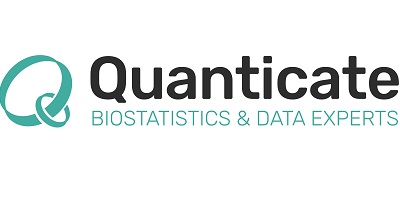The Clinical Research Organisation (CRO) sector is set for significant transformations in 2024 and faces several challenges. Increased research funding and government support for R&D, a rise in the global patient base, escalating chronic disease prevalence, and the easing of pandemic-related restrictions are contributing to a heightened demand for approved treatments and personalized medicine.
As of 2022, the CRO market was valued at approximately 56.7 billion USD, with North America accounting for 24.4 billion USD of this figure. Projections suggest that by 2028, the global CRO market could exceed 65.5 billion USD, growing at a CAGR of around 6.4% from 2022 to 2028. This growth is largely attributed to the increasing trend of outsourcing clinical trials as CROs meet the escalating demands for drug development support. This shift requires CROs to be more flexible and adaptable in their service offerings, ensuring they can meet the varied and evolving needs of their clients.
We’ve broken down some key areas of current trends, and the potential challenges the CRO market could face:
Therapeutic Areas
The surge in demand for complex treatments has impacted therapeutic areas like oncology, rare diseases, and infectious diseases. The need for precision in clinical trials and personalized treatments has led to a shift in the way CROs approach therapeutic interventions. The complexity of treatments, especially in oncology and rare diseases, requires a deeper understanding of genetic, environmental, and lifestyle factors. This complexity has necessitated the development of more sophisticated biostatistical models and a nuanced approach to study design and data analysis.
Oncology
The oncology sector has seen an upsurge in demand due to the growing incidence of cancer. This necessitates the development of diverse therapies and medical devices for better cancer management. The oncology segment, with a revenue of 30.85 USD billion in 2022, is poised for further growth. Emerging regulatory guidelines and alternatives to standard dosing methods present opportunities, particularly for biometric CROs that can navigate complex trial designs.
Rare Diseases
Approximately 300 million people globally are affected by rare diseases, creating a demand for specialized treatments. Valued at 195 billion USD in 2020, the rare disease treatment market is driving the need for CRO expertise in this area. Factors like regulatory incentives, advancements in genomics and precision medicine, and patient advocacy are influencing this trend.
Infectious Diseases
The market for infectious disease treatments, valued at 72.5 billion USD in 2021, is anticipated to reach 106.4 billion USD by 2026, growing at a CAGR of 8.2%. This growth is largely fuelled by the demand for SARS-CoV-2 vaccines and treatments. The increase in infectious disease cases and hospitalizations also plays a significant role in this expansion.
Technology and Data Management
Integrating Artificial Intelligence (AI) and Big Data presents opportunities to enhance patient recruitment and trial efficiency. AI algorithms can process vast amounts of data to identify potential trial candidates more effectively than traditional methods, however the full potential of AI in clinical research remains largely untapped. The industry faces challenges in terms of integrating AI into existing infrastructures, ensuring data privacy and addressing ethical concerns.
The pandemic accelerated the adoption of digital technologies in clinical trial management. The shift from paper-based records to digital data capture is notable, with a focus on patient-centric approaches. The requirement to adopt to this new way is reshaping clinical trial analyses, with virtual, decentralized, and hybrid trials growing in popularity, emphasizing the need for electronic data capture methods like eCOA, ePRO, and wearables. These technologies not only streamline data collection but also enhance the quality and reliability of trial data, facilitating more accurate and timely analyses. However, this requires a significant investment in technology and training, as well as a shift in organizational culture to support innovation and adaptability.
Real World Evidence
One of the persistent challenges is getting patients into clinical sites, which makes the nuances of real world evidence increasingly beneficial. There’s a growing demand for real world data (RWD) in drug analysis, driven by technological advancements, the logistics of conducting trials for rare diseases, as well as the insights it provides into how treatments work in diverse, everyday populations. RWD offers insights into treatment efficacy in everyday settings, differing from controlled trial environments. CROs are increasingly required to proficiently handle RWD, analyze it, and design relevant trials.
Niche CROs
The CRO market is witnessing mergers and acquisitions, with larger CROs absorbing smaller niche firms. In 2017, seven major CROs held 52% of the global market share, leaving a significant portion to niche providers. These smaller, specialized CROs are finding competitive advantages by focusing on specific therapeutic areas or development stages. Their expertise in biometric data, real world evidence, and intricate study designs is particularly valuable, especially to biotech companies with smaller product portfolios who prefer outsourcing unique tasks to specialized CROs.
Success in 2024 hinges on adaptability, innovation, and strategic partnerships, presenting both challenges and opportunities for the CRO market, but also offering substantial opportunities for those willing to embrace change and steer the curve in this dynamic industry.



















